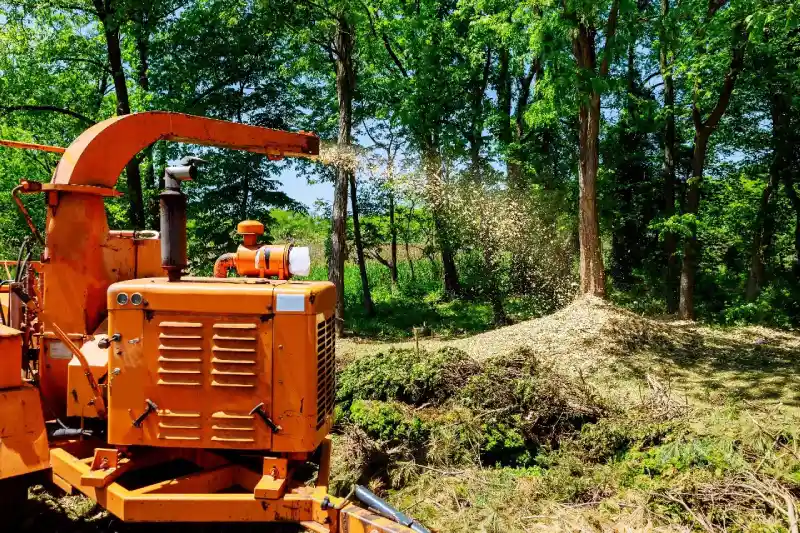
Ensuring optimal growth and longevity when planting trees
Mulching is a simple yet highly effective practice that can significantly improve the health and longevity of your trees. Whether you’re planting new trees or caring for mature ones, proper mulching techniques play a crucial role in plant health care. Here’s why mulching matters and how to preserve plants with the best mulching practices.
1. Retaining Moisture
One of the primary benefits of mulching is its ability to retain soil moisture. Mulch acts as a barrier, reducing water evaporation from the soil. This is particularly important during hot summer months or in dry climates. Consistent moisture levels are crucial for the health of tree roots, especially for newly planted trees that are still establishing their root systems.
2. Regulating Soil Temperature
Mulch helps regulate soil temperature, keeping it cooler in the summer and warmer in the winter. This temperature moderation protects roots from extreme conditions, ensuring that they remain healthy and functional throughout the year. Stable soil temperatures also encourage consistent growth and nutrient uptake.
3. Suppressing Weeds
Weeds compete with trees for water, nutrients, and sunlight. Mulching creates a physical barrier that suppresses weed growth, reducing competition and allowing trees to access the resources they need to thrive. A weed-free environment is particularly beneficial for young trees that are still establishing themselves.
4. Improving Soil Health
As organic mulch decomposes, it adds valuable nutrients to the soil, enhancing its fertility. This process improves soil structure, aeration, and microbial activity, all of which contribute to better root health and overall plant vitality. Mulching with organic materials like wood chips, leaves, or compost can create a nutrient-rich environment that supports robust tree growth.
5. Preventing Soil Erosion
Mulch helps prevent soil erosion by reducing the impact of rain and wind on the soil surface. This is especially important on slopes or in areas with loose soil. By keeping the soil in place, mulch ensures that tree roots remain stable and well-anchored, reducing the risk of damage from erosion.
Best Practices for Mulching
To maximize the benefits of mulching and ensure the health of your trees, it’s important to follow these best practices:
1. Choose the Right Mulch
Select an organic mulch that will decompose over time, enriching the soil. Wood chips, bark, leaves, and compost are excellent choices. Avoid using inorganic materials like plastic or rubber, as they do not provide the same soil health benefits and can hinder water and air movement.
2. Apply the Correct Amount
Apply a 2- to 4-inch layer of mulch around the base of the tree. Too much mulch can create a barrier that prevents water and air from reaching the roots, while too little may not effectively retain moisture or suppress weeds. Spread the mulch evenly to ensure comprehensive coverage.
3. Keep Mulch Away from the Trunk
Avoid piling mulch directly against the tree trunk. This practice, known as volcano mulching, can trap moisture against the bark, leading to rot and making the tree more susceptible to pests and diseases. Instead, create a mulch-free zone around the trunk, leaving a few inches of space to allow air circulation and prevent moisture buildup.
4. Replenish Mulch as Needed
Organic mulch decomposes over time, so it’s important to replenish it periodically to maintain an effective layer. Check the mulch depth every few months and add more as needed to keep it within the recommended 2- to 4-inch range.
5. Monitor Tree Health
Regularly monitor the health of your trees and the condition of the mulch. Look for signs of excessive moisture, mold, or pest activity, and adjust your mulching practices accordingly. Healthy, well-mulched trees should show consistent growth, vibrant foliage, and minimal signs of stress.
To Preserve Health and Beauty — Mulching Matters
Mulching is a vital component of plant health care, providing numerous benefits that contribute to the overall well-being of your trees. By retaining moisture, regulating soil temperature, suppressing weeds, improving soil health, and preventing erosion, proper mulching practices can help ensure the health and longevity of your trees.
Follow these best practices to preserve your plants and create a thriving landscape. Whether you’re planting trees or caring for mature ones, remember that a little mulch goes a long way in supporting tree health.
For more information about tree and plant health, contact the pros at Jarvis Tree Experts. We offer a free initial consultation and the best arborist services available.
Originally posted 2024-06-30 13:51:27.
Originally posted 2024-06-30 13:51:27.




